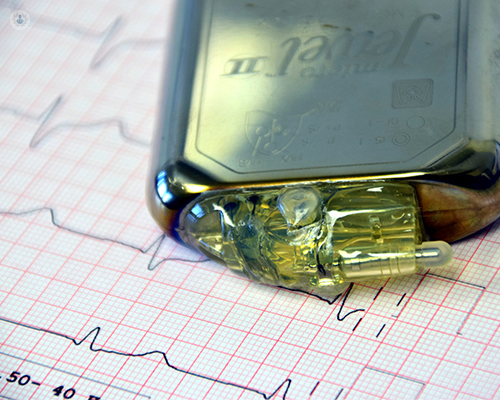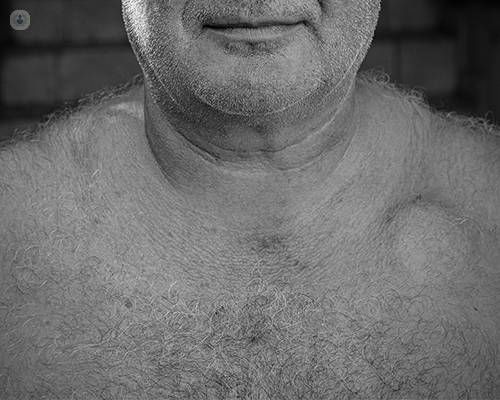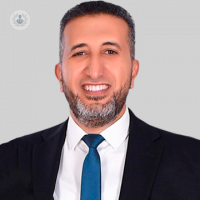What is it like having a pacemaker?
Escrito por:A slow heart rate can be a very serious problem if not treated. A common treatment option for this is having a pacemaker fitted to keep the heart beating. What is involved with this device? Answering this question and more in this article is renowned consultant cardiologist and electrophysiologist, Dr Mokhtar Ibrahim.

When should someone consider having a pacemaker placed?
First of all, pacemakers are small, electronic devices that are a part of a broader term, which are cardiac implantable electronic devices. A pacemaker is an electrical generator that is capable of generating an impulse and deliver it to the heart muscle to make it contract.
Our bodies normally have a natural pacemaker that generates an electrical signal to stimulate the heart throughout our life. Due to wear-and-tear and some diseases, someone might have their heart beating very slow or with abnormal conduction. This means that the natural pacemaker is not working properly or there is poor communication between the top and bottom chambers of the heart, something we call heart block. At this point, the pacemaker is indicated.
There are special types of pacemakers, which are called biventricular pacemaker or cardiac re-synchronisation therapy. These special types of pacemakers are also given in order to restore the normal function of the heart and to improve the heart synchronous movement for people who have normal heartbeats but who have heart failure with abnormal communication between the top and bottom chambers of the heart.
What exactly does the role of a pacemaker entail?
The role of pacemakers is to generate an electrical impulse. Through some wires, this impulse is directly transmitted to the heart muscle to stimulate the heart and allow the heart to restart or improve the beating as normal; this is a very basic function of the pacemaker.
The second function of the pacemaker for those who have heart block, or the impulse is not getting from the top to the bottom chamber, is to transmit the impulse between the two chambers.
The third type of pacemaker is the biventricular pacemaker. It involves placing more than one pacemaker lead to the right and left bottom chambers to make them contract together which improves the heart function.
Additionally, the pacemaker has a monitoring function. So, if someone has a pacemaker, it monitors the heart 24-hours a day and records any fast or irregular heartbeats (like atrial fibrillation) that the patient might be having.
How will having a pacemaker change one's quality of life and their life in general?
If the patient is suffering from slow heartbeats, these normally present with some general sense of fatigue, tiredness, dizziness, syncope, or fainting episodes. Sometimes, the beats don’t speed up when the patient exercises; normally these conditions happen when we get older.
If someone has a pacemaker to improve a slow heartbeat, hopefully afterwards, the main problem of fainting, dizziness, or syncope will disappear. If they have poor exercise tolerance and they feel tired when they exercise because the heart is too slow, the pacemaker will improve that, as well.
For those who have heart failure, having the biventricular pacemaker on top of the heart failure medications will enable them to exercise better, improve the quality of life, and lessen the heart failure symptoms.

How effective are pacemakers?
The pacemakers are very reliable and effective; the technology has been around more than 50 years now. There are millions of people with a pacemaker around the world. The malfunction or faults that happen with a pacemaker are actually very rare. The percentage of pacemaker failure is less than one per cent a year.
Anyone who has a pacemaker will normally have some form of follow-up with the pacing clinic or physician who implanted the pacemaker every six months to a year. They will continuously monitor the pacemaker function. When the battery of the pacemaker is close to an end, the hospital will receive a warning and the patient will be advised to go for an elective replacement of the pacemaker. Additionally, if there is any fault with the pacemaker wires or function, this can be easily detected during routine pacemaker checks like an annual MOT.
What are warning signs that the pacemaker is not working?
Initially, in the first month after the implantation, we generally advise the patient to keep an eye on their pacemaker wound site and observe any bleeding, oozing, or swelling, which might be the first sign that something wrong is going on.
Once settled in and checked, the person should live a normal life. If he/she starts to feel a recurrence of the original symptoms like shortness of breath, palpitations, dizziness, faint, or muscle twitches in the chest wall, it is a sign that the pacemaker might not be functioning properly. They need to seek medical advice and speak to their routine pacing clinic.
The left bottom chamber wire is close to the diaphragm, which is a respiratory muscle, so some people will get twitches with the pacemaker impulse like hiccups or abnormal muscle twitch. If they feel that they need to contact the pacing team again, they will carry out a check and let the patient know if there is anything needing to be adjusted or changed.
How often should the pacemaker be replaced?
The pacemaker is composed of wires going to the top and bottom chamber of the heart and the generator, which we normally place under the skin beneath the left collarbone. The pacemaker has got a battery, which lasts typically between seven to ten years. In few occasions, they last shorter, and on other occasions they last longer than that. This depends on how much the person actually uses the pacemaker.
The patient will normally have an annual check of the pacemaker, and if we realise that the pacemaker battery is close to the end of life, we ask them to come for elective replacement of the pacemaker generator. However, we keep the wires and leads in place as they don't need to be replaced unless they are broken or there is a problem.
If you are worried about heart health or would like more information about pacemakers, don't hesitate to book a consultation with Dr Mokhtar Ibrahim via his Top Doctors profile today.


